Why do you need a greenhouse: Pros and cons of greenhouse growing
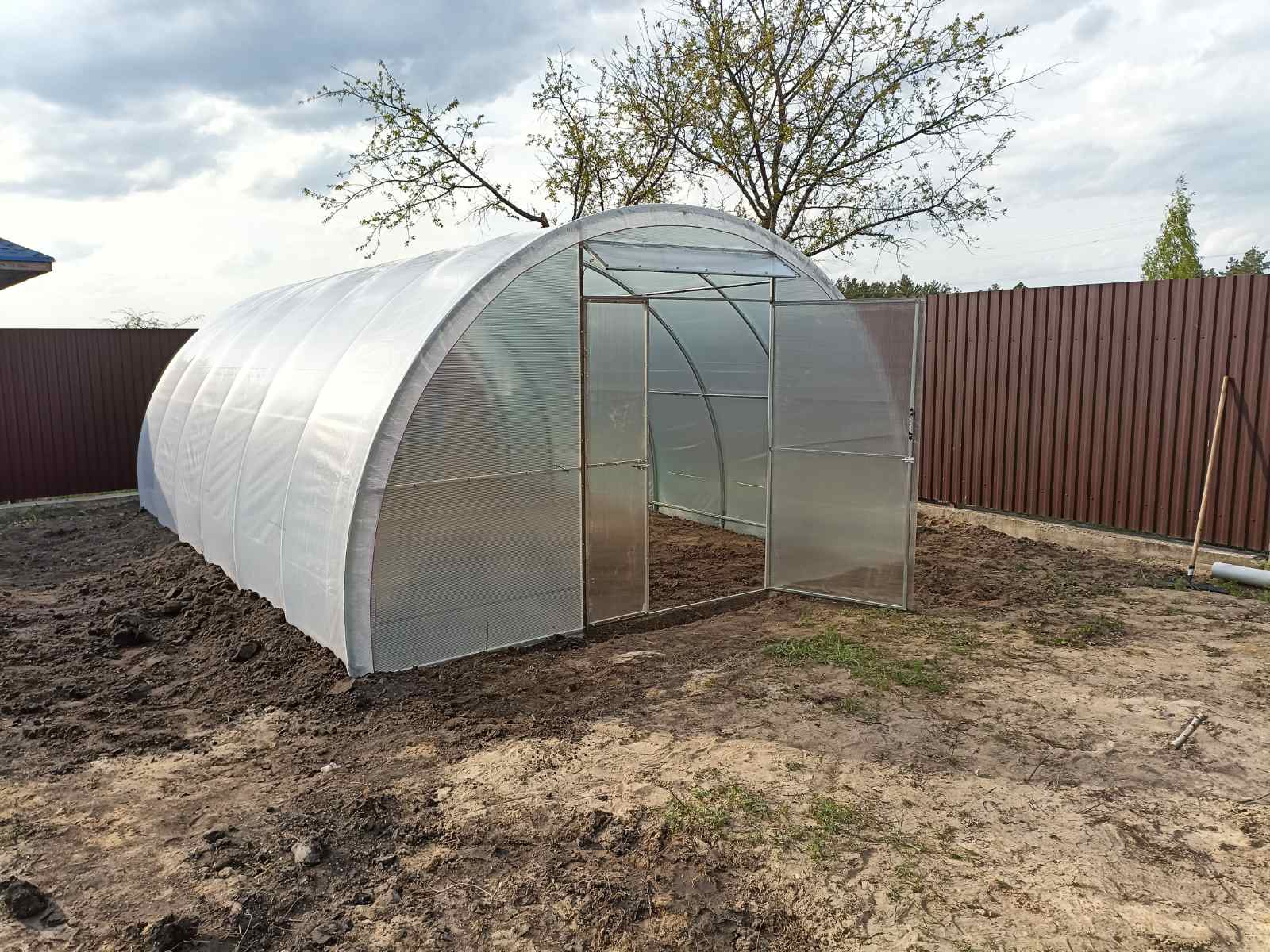
Modern agriculture faces constant challenges that require innovation and efficient solutions. In this context, greenhouses are becoming increasingly popular as a means of optimizing production. They are not just following fashion trends, but are becoming an integral part of success in agriculture.
Why do you need a greenhouse? This is the question we will answer in this expert article, considering all the advantages and importance of using greenhouses in modern agriculture. After all, greenhouses are not only protection from natural anomalies, but also the key to increasing yields, reducing risks and ensuring a stable supply of fresh products. Let's figure out together how greenhouses become the cornerstone of successful agriculture and what subtleties of their use are important for every farmer to know.
Advantages of greenhouses
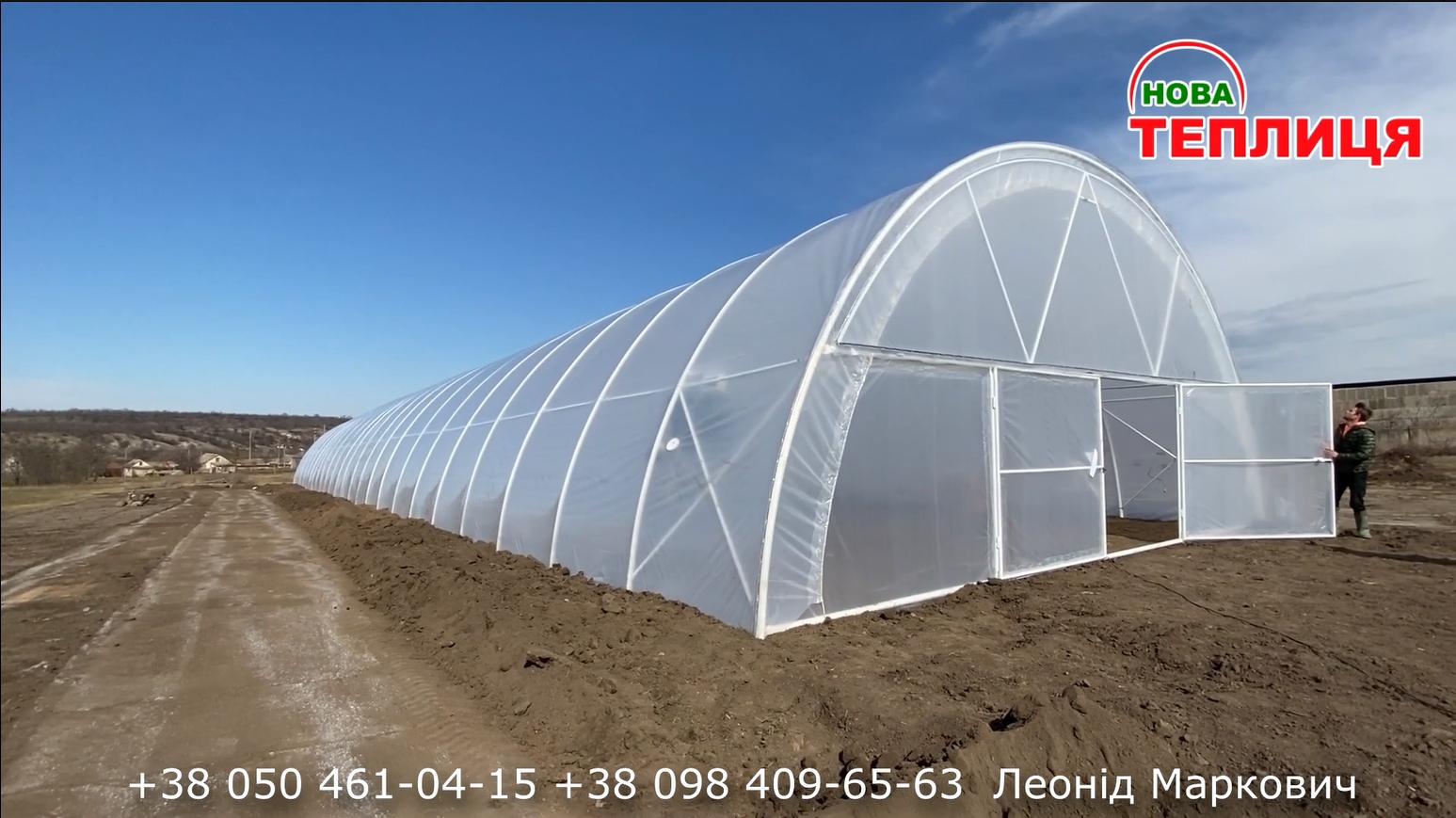
Growing plants and crops in open areas often faces unpredictable weather, aggressive pests and limited seasons. In such situations, greenhouses act as a reliable partner for agriculture. They provide a number of undeniable advantages that allow farmers and gardeners to achieve more stable and high results.
In this section, we will take a closer look at how greenhouses impact on improving growing conditions and the benefits they bring to agriculture.
Ensuring a stable climate and protection from extreme weather conditions
One of the key challenges faced by agricultural enterprises and gardeners is the unpredictability of the weather. Extreme temperatures, hail, strong winds and other natural anomalies can negatively affect the growth and development of plants, and therefore the yield. In this context, greenhouses become indispensable tools that provide stable climatic conditions for plants.
Example: Imagine a situation where a sudden cold snowfall in mid-spring threatens the young shoots of your crop. In a greenhouse, you could maintain a warm temperature and avoid freezing the plants, while outside the greenhouse the plants could be destroyed.
Greenhouses create a cozy and protected space where you can control temperature, humidity and air movement. In the cold season, the greenhouse retains heat, so that plants continue to grow actively even at low temperatures. In hot weather, they, in turn, provide cooling and protection from burns, thanks to proper ventilation and shading.
Example: Growing tomatoes in a greenhouse allows maintaining an optimal temperature of about 25-30°C even in the cold months. This promotes intensive plant growth and earlier fruiting, which increases their yield and quality.
Greenhouses also help protect against adverse weather conditions such as hail or strong winds. The dense covering of the greenhouse prevents damage to plants and fruits from large hailstones and reduces the risk of breakage from the wind.
As a result, ensuring a stable climate in the greenhouse not only reduces the risk of crop losses due to adverse weather conditions, but also allows plants to grow healthier and use energy efficiently for growth and development, rather than for fighting extreme environmental factors.
Extension of the growing season and increase of the productive period
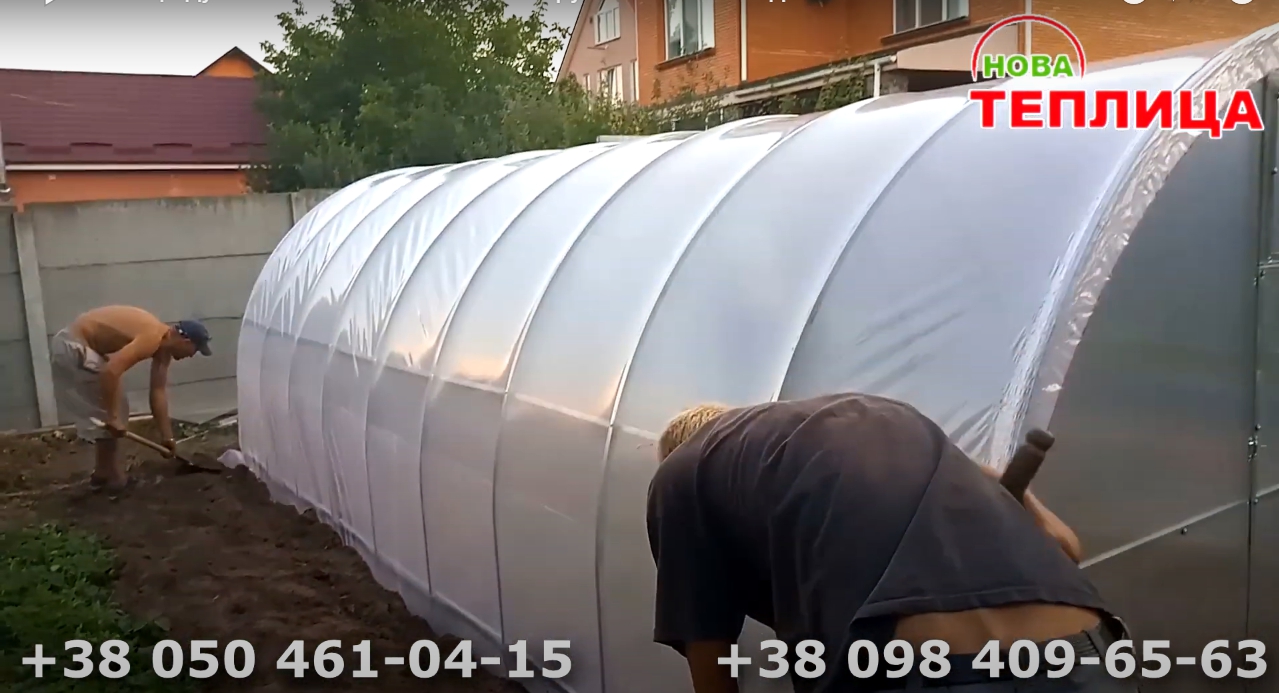
One of the most significant benefits of greenhouses is their ability to extend the growing season and create conditions for plant cultivation regardless of the time of year. This means that farmers and gardeners can harvest crops over a longer period of time, which is important for ensuring a regular supply of fresh produce.
Example: Under typical conditions, many vegetables and fruits can only grow successfully and produce fruit during the warmer months. However, with greenhouses, you can begin growing much earlier than spring and continue growing even after fall, thanks to the controlled climate conditions inside the greenhouse.
Extending your growing season also means you can grow crops that might not normally thrive in your area due to short summers or harsh winter conditions.
Example: In northern regions, where winters are long and cold, many varieties of tomatoes and peppers cannot produce a good harvest outdoors. However, in a greenhouse with an optimal microclimate, you can successfully grow these crops even throughout the year, obtaining a stable and high-quality harvest.
Extending the season also allows for the replacement of declining yields of some crops with others, maximizing the use of space and resources. This can be especially useful for commercial farmers, who want to supply the market with products throughout the year.
By extending your growing season using greenhouses, you can achieve higher yields and a wider variety of crops, increasing your productivity and profitability.
Protection from pests and diseases
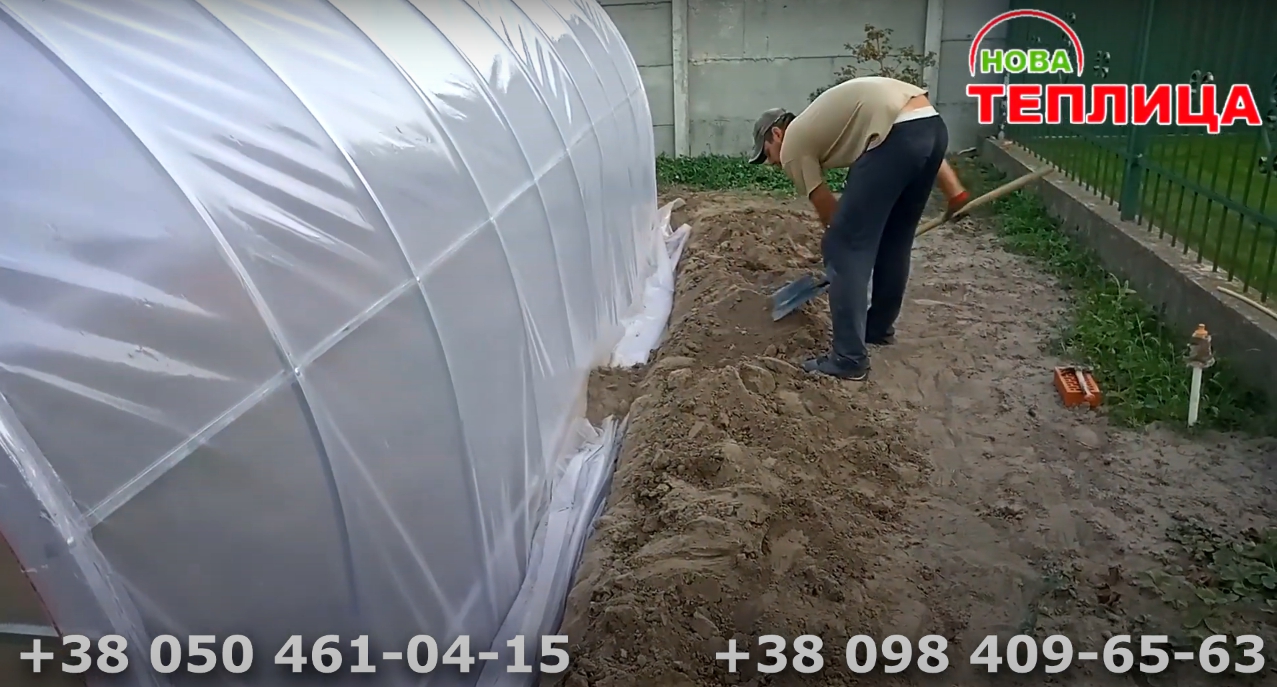
Protecting plants from pests and diseases is one of the most important tasks in agriculture. External agents can seriously harm the harvest, reducing its quality and quantity. Greenhouses act as reliable barriers that can provide adequate protection for plants from unwanted guests.
Example: Polyphagous pests such as slugs and insects can cause significant damage to crops. Greenhouses provide a physical barrier, limiting pest access to plants. In addition, biological controls such as predatory insects can be used inside the greenhouse to control pest populations.
Example: Plant diseases are often spread through airborne droplets, rain, or soil. Greenhouses allow you to create a barrier between plants and the outside environment, reducing the likelihood of infection. Greenhouses also allow you to control humidity and ventilation, creating less favorable conditions for disease development.
Greenhouses also provide a controlled environment that allows for integrated pest and disease management. This involves using a combination of measures: biological, chemical and mechanical, to effectively control pest populations.
Example: Pests such as aphids or spider mites can multiply quickly and damage plants. In a greenhouse, you can use parasitic insects that will feed on these pests, preventing them from growing.
Keeping plants free from pests and diseases in greenhouses not only results in higher yields, but also helps reduce the use of pesticides and chemicals, which is important for environmental sustainability and product safety.
Soil and soil quality management
Soil quality plays a fundamental role in successful agriculture. Greenhouses allow farmers to more actively influence the condition of the soil, providing optimal conditions for plant growth and maintaining their health.
Example: In open field conditions, soil may be subject to erosion by rain and wind. In a greenhouse, you can take steps to prevent erosion by creating barriers such as mulching and controlling moisture.
Greenhouses also allow farmers to more closely control the composition and fertility of the soil.
Example: You can create an optimal soil mixture adapted to the needs of specific crops. This is especially important when growing plants that require specific nutrients, such as different types of vegetables or flowers.
Soil management also includes monitoring the levels of salts and minerals in the soil. Agricultural activities can cause salts to build up, which can negatively impact plant growth. In a greenhouse, you can manage watering and drainage to maintain salt balance.
Example: Tomatoes, for example, are sensitive to salt in the soil. In a greenhouse, soil flushing methods or special irrigation systems can be used to reduce the salt concentration and ensure normal plant development.
Greenhouse soil management allows for more efficient use of resources, minimising losses and providing optimal conditions for plant growth. This approach helps to increase crop yields and maintain long-term soil fertility.
Saving water and resources
One of the main challenges of modern agriculture is the efficient use of resources, especially water. Greenhouses provide an opportunity to significantly reduce the consumption of water and other valuable resources.
Example: In open areas, much of the water used for irrigation may evaporate under the influence of sunlight or simply go into the soil without reaching the roots of the plants. In a greenhouse, humidity can be controlled and the optimal moisture ratio in the soil can be maintained.
Drip irrigation systems, hydroponics, and aquaponics are just some of the methods that can be used in greenhouses to use water more efficiently.
Example: In a hydroponic system, plants are grown in special substrates or directly in a nutrient solution, which minimizes water loss. In aquaponics, a nutrient solution rich in nutrients is used to grow plants, and then it goes into an aquaculture system, enriching the water for animals and closing the loop.
In addition, greenhouses allow you to save other resources, such as fertilizers and energy.
Example: In a greenhouse, fertilizer application can be controlled more precisely, preventing it from dissolving in the soil or being washed away by rain. This allows for more efficient use of fertilizers and reduces the negative impact on the environment.
Example: Greenhouses can also be equipped with alternative energy systems such as solar panels, which can reduce energy costs.
Saving water and resources in greenhouses not only reduces costs, but also promotes the sustainable use of limited natural resources. This is especially important in the context of climate change and the growing need for food for the entire planet.
Types of greenhouses and their features
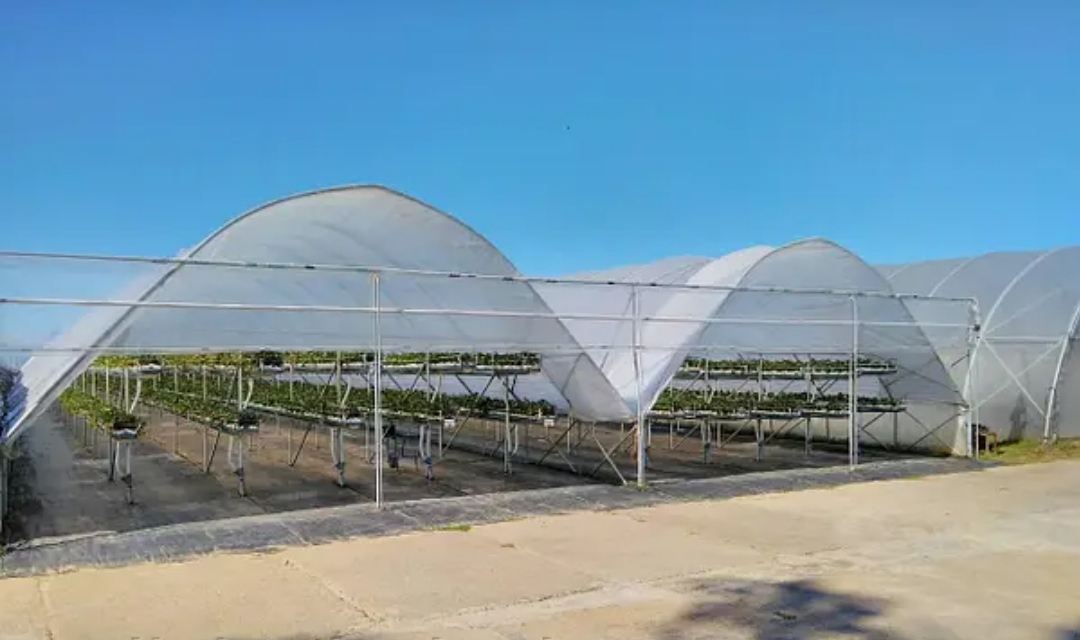
The variety of greenhouse types provides farmers and gardeners with flexible tools to optimize plant production. The choice of a specific greenhouse type depends on many factors, such as climate, crop types, available resources, and budget. In this section, we will look at the different types of greenhouses, their features, and applications to help you decide which is best for your needs and conditions.
Film, glass and polycarbonate greenhouses
When choosing a greenhouse, it is important to consider the variety of materials from which they can be made. The three most popular options - film, glass and polycarbonate greenhouses - have their own characteristics and applications.
- Film greenhouses: Film greenhouses are the most affordable option and are popular among small and medium-sized farmers. They usually have a frame made of metal pipes or arcs, and a covering made of polyethylene film.
Example: Film greenhouses are well suited for growing fast-growing vegetable crops such as lettuce, radishes, and spinach. Due to their simplicity and cost-effectiveness, they are often used at the initial stages of farming.
- Glass greenhouses: Glass greenhouses are durable and long-lasting. They have transparent glass walls and a metal frame. Such greenhouses provide good protection from external factors and create a favorable climate.
Example: Glass greenhouses are ideal for growing heat-loving plants such as tomatoes, peppers, cucumbers. They create an optimal microclimatic space for long-term and high-quality growth of crops, even in cold seasons.
- Polycarbonate greenhouses: Greenhouses with polycarbonate walls have good resistance to external influences, including hail and strong winds. Polycarbonate, as a material, provides good thermal insulation and uniform light diffusion.
Example: Polycarbonate greenhouses are often used for commercial cultivation of flowers, cacti, and vegetable crops. They provide stable protection for plants and allow for optimal growth conditions, even in variable weather conditions.
| Characteristic | Film greenhouses | Glass greenhouses | Polycarbonate greenhouses |
|---|---|---|---|
| Transparency | Tall | Very high | Good |
| Strength | Low | Tall | Tall |
| Heat retention | Moderate | High | High |
| Moisture resistance | Moderate | Tall | Tall |
| Price | Low | Tall | Average |
| Impact resistance | Low | Low | Tall |
| Wind resistance | Moderate | Moderate | Tall |
| Light transmittance efficiency | Depends on the quality of the film | Tall | Good |
| Technical complexity | Low | Tall | Average |
The choice between different types of greenhouses depends on your goals, budget, and the climate conditions of the region. When planning the use of a greenhouse, consider its material, durability, light and heat transmittance to provide the optimal environment for your plants to grow.
Possibilities of hydroponics and aquaponics
Hydroponics and aquaponics are innovative methods of growing plants that offer unique opportunities to improve the efficiency and sustainability of agriculture.
Hydroponics involves growing plants without using soil, with the roots immersed in a nutrient solution that contains essential macro- and microelements. This method allows for precise control over the availability of water and nutrients to plants.
Example: Growing lettuce or spinach in a hydroponic system can result in a significant increase in growth rate and yield, as the plants instantly receive everything they need to thrive.
Aquaponics is a combination of hydroponics and aquaculture (raising aquatic animals). In this system, aquatic animals such as fish or shrimp release nutrients into the water, which are then used as fertilizer by the plants. In turn, the roots of the plants purify the water, creating a symbiotic system.
Example: In an aquaponic system, fish and plants provide each other with essential nutrients. Fish release nitrogen compounds, which bacteria convert into nutrients for plants. Plants, in turn, purify the water, preventing excess nitrates, which maintains a healthy environment for the fish.
Both of these methods have many advantages: reduced water costs, minimization of fertilizer and pesticide use, increased yields and reduced environmental impact. However, they require specific knowledge and technology, which can be a challenge for some farmers.
Hydroponics and aquaponics provide unique opportunities for intensive and sustainable plant growth, making them popular tools in modern agriculture.
Caring for plants in a greenhouse
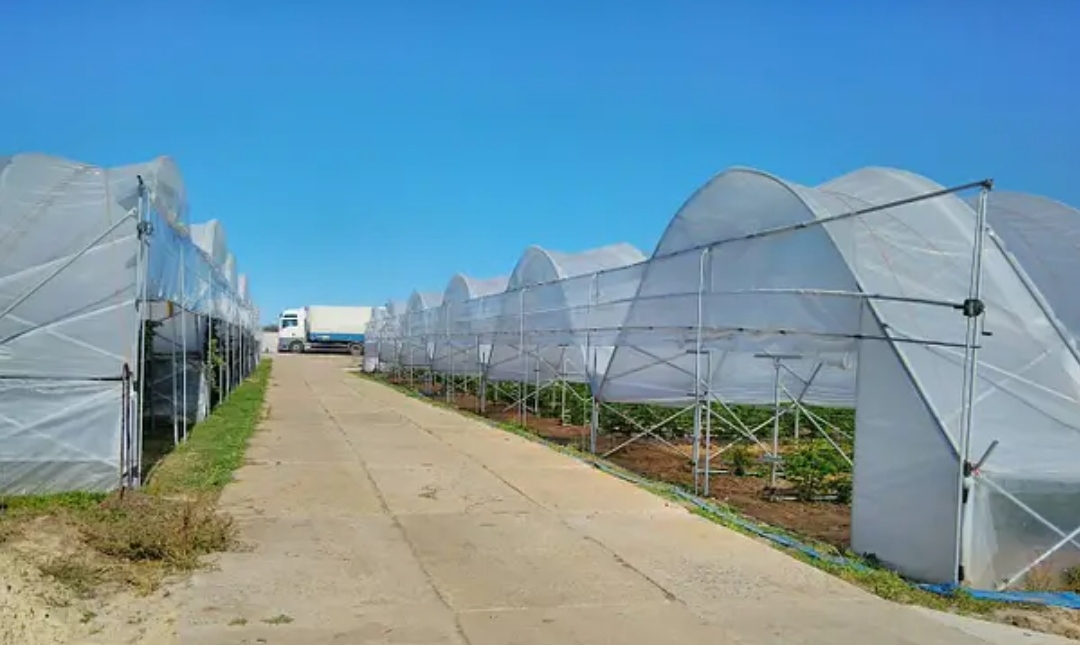
Taking care of greenhouse plants is not just a duty, but an art. When plants are grown in a controlled environment, such as greenhouses provide, it opens up a wide range of opportunities to maximize yield and quality of produce. In this section, we will look at the important aspects of greenhouse plant care, from watering and fertilizing to pest control and creating the optimal climate for plants to thrive.
Ventilation and climate control
Creating an optimal climate in a greenhouse is a key aspect of successful plant cultivation. Ventilation and climate control play a crucial role in ensuring plant growth and development, as well as preventing overheating or overcooling.
Ventilation:
Ventilation in a greenhouse exchanges air between the internal and external environments. It helps avoid overheating, removes moisture, reduces the concentration of carbon dioxide, and provides plants with access to fresh air.
Example: During hot periods of the year, when temperatures in the greenhouse can rise to high values, proper ventilation will reduce the risk of “burn” on plants and prevent overheating.
Climate control:
Climate control includes control of temperature, humidity and light inside the greenhouse. Heating, cooling, humidification and lighting systems are used for this purpose.
Example: During the colder months, heating systems maintain the optimum temperature for plant growth, allowing them to continue to thrive in conditions that would be too cold outside the greenhouse.
Example: It is also important to provide adequate lighting, especially during the winter months when daylight hours are shortened. Artificial lighting can stimulate plant growth and flowering, which is especially useful for growing flowers and other crops.
Modern greenhouses are often equipped with automatic systems that regulate ventilation, temperature and other climate parameters based on sensors and programming. This allows for optimal conditions for plant growth regardless of the time of day or weather changes.
Effective ventilation and climate control in the greenhouse provide the necessary conditions for plants, promoting their healthy development and maximum yield.
Regular watering and fertilization
Regular watering and feeding of plants are key aspects of greenhouse plant care. They provide the plants with the necessary moisture and nutrients, promoting their healthy growth, development and productivity.
Regular watering:
Watering is one of the main functions of a greenhouse, especially in climate-controlled environments. Plants in a greenhouse can be more sensitive to changes in humidity, so regular and properly dosed watering is important.
Example: Plants may require different amounts of water at different stages of their development. Young seedlings may need more frequent and light watering to avoid drying out, while established plants may use moderate amounts of water more effectively.
Fertilizers:
Nutrients are key to plant growth. In a greenhouse, it is important to pay special attention to fertilization, as controlled conditions can quickly deplete the nutrients in the soil.
Example: Nitrogen, phosphorus and potassium (NPK) are the main macronutrients that plants obtain from fertilizers. It is important to select fertilizers according to the needs of specific crops.
Example: In hydroponic systems, nutrients are delivered directly to the plant roots in solution, allowing for efficient management of plant nutrition.
Regular fertilization can be adapted to the needs of plants at different stages of their life cycle. The use of organic and mineral fertilizers helps maintain soil fertility and provide plants with everything they need for healthy growth.
It is important to remember that overwatering or improper fertilization can also harm plants, so it is important to monitor how plants react to these processes and adjust them based on their needs.
Regular watering and fertilization, combined with other aspects of plant care, will help create optimal conditions for their successful growth, development and productivity in the greenhouse.
Monitoring and automation
Modern technologies allow for the introduction of a high level of monitoring and automation into the processes of plant care in a greenhouse. This not only simplifies the work of farmers, but also contributes to the increase in efficiency and quality of production.
Monitoring:
Monitoring involves continuous observation of various parameters in the greenhouse, such as temperature, humidity, CO2 levels, lighting, etc. Sensors and monitoring systems allow farmers to obtain real data on the condition of plants and their growing conditions.
Example: Monitoring systems can alert a farmer to sudden changes in temperature or humidity, allowing for rapid response to adverse situations and preventing damage to plants.
Automation:
Automation provides the ability to manage various processes in a greenhouse using software solutions and automatic systems. This may include automatic watering, temperature control, lighting, and even plant feeding.
Example: Automatic watering systems can be based on data from soil moisture sensors. When the moisture drops to a certain level, the system automatically starts watering the plants.
Example: An automatic temperature control system can switch on cooling or heating depending on preset parameters.
Automation allows for the optimization of resource use, ensuring constant maintenance of optimal conditions for plant growth and reducing the risk of human error.
Example: In hydroponic systems, automatic control can maintain the correct ratio of nutrients in the solution, which ensures that the plants always have optimal feeding conditions.
Greenhouse monitoring and automation not only improves growing efficiency, but also reduces resource costs, ensures high-quality and stable yields, and allows for more accurate responses to changes in the environment.
Selecting Plants and Planning Crops
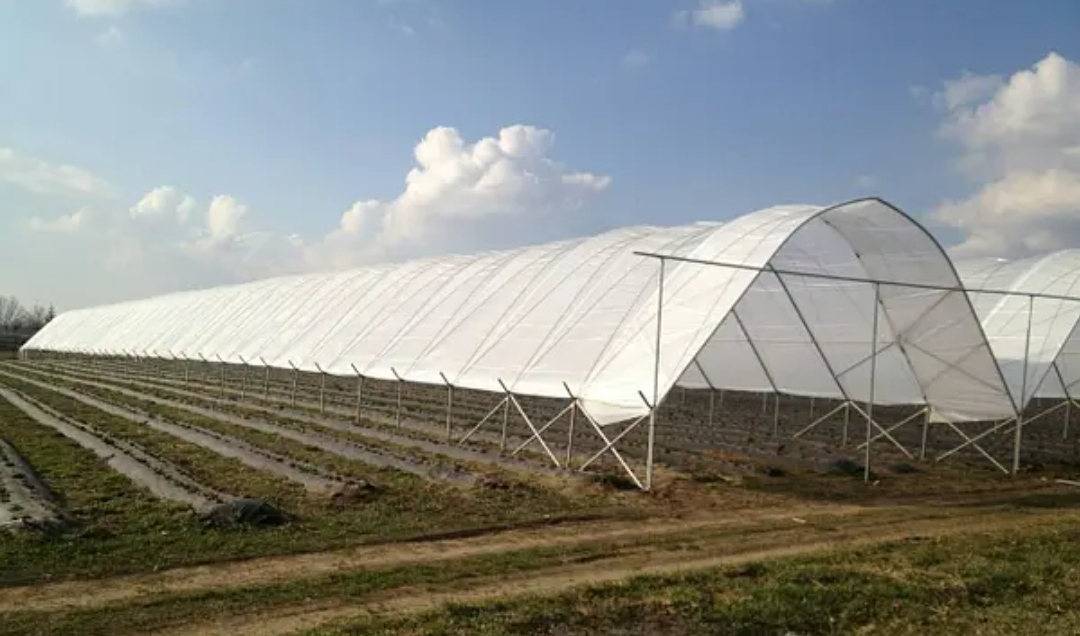
Selecting suitable crops for greenhouse cultivation is an important step that determines the success of the entire production. Greenhouse conditions provide optimal climate parameters, which allows growing a wide range of crops even in unfavorable times of the year.
Suitable crops for greenhouses:
A greenhouse can successfully grow a variety of vegetables, herbs, flowers, berries, and even some trees. However, the choice of crops depends on many factors: the climate of the region, available resources, market demand, and other aspects.
Example: Greenhouses are ideal for growing tomatoes, peppers, cucumbers and eggplants. Controlled conditions allow for an optimal microclimate, which contributes to high yields and product quality.
Example: Flowers such as roses, chrysanthemums or lilies can also be grown in greenhouses, providing them with ideal conditions for long and colourful flowering.
| Culture | Duration of the growth cycle | Climate preferences | Type of greenhouse | Greenhouse space and height | Care needs |
|---|---|---|---|---|---|
| Tomatoes | 60-90 days | Warmth, light | Polycarbonate | Medium height, vertical supports | Regular watering, fertilizing |
| Cucumbers | 50-70 days | Heat, humidity | Polycarbonate | Vertical growing, horizontal shelves | Intensive watering, fertilizing |
| Salad | 25-50 days | Coolness, light | Film | Horizontal shelves | Moderate watering, fertilizing |
| Basil | 60-90 days | Warmth, light | Polycarbonate | Horizontal shelves | Moderate watering, fertilizing |
| Peppers | 60-90 days | Warmth, light | Glass | Medium height, vertical supports | Regular watering, fertilizing |
| Spinach | 35-50 days | Coolness, light | Film | Horizontal shelves | Regular watering, fertilizing |
| Zucchini | 40-60 days | Heat, humidity | Polycarbonate | Horizontal shelves | Intensive watering, fertilizing |
The importance of crop rotation planning:
Crop rotation planning is the arrangement of crop plants in space and time to minimize the risk of disease, pests, and soil depletion. It is an important strategy for maintaining plant health and increasing crop yields.
Example: If the greenhouse has grown tomatoes this season, the next step might be to grow greens or flowers. This avoids the transfer of diseases and pests specific to tomatoes.
Example: Proper rotation also helps improve soil fertility. Crops with different nutrient requirements can use resources more efficiently, preventing soil depletion.
Example: For hydroponic systems, planning crop rotation is also important to avoid overloading the system with the same type of nutrients and to prevent the development of parasitic organisms.
Selecting crops and planning rotations require multiple factors to be considered and a strategic approach. Mixing crops in the greenhouse and planning crop rotations wisely will help ensure sustainable and highly productive agricultural production.
Sales and Marketing Using Greenhouses
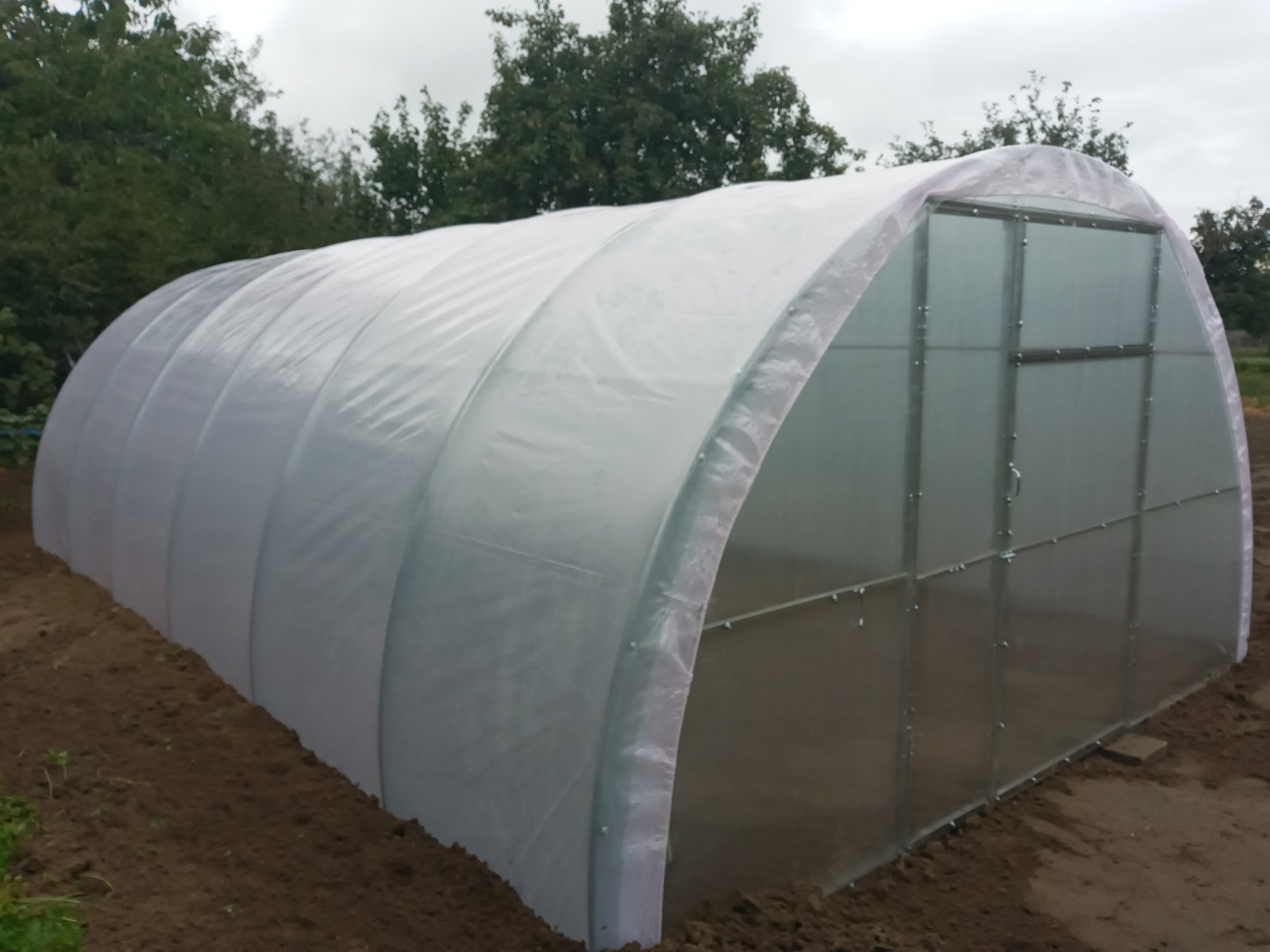
Growing commercial crops in greenhouses opens up wide opportunities for successful sales and effective marketing of agricultural products.
Growing commercial crops:
Greenhouses allow crops to be grown regardless of seasons and climate conditions. This gives farmers the opportunity to offer fresh, quality products to the market even during times when there is usually no harvest.
Example: Growing berries such as strawberries or raspberries in greenhouses can allow fresh berries to be offered earlier than is possible in open ground. This can create a competitive advantage in the marketplace.
Example: Greenhouse vegetables and greens can be marketed as organic and environmentally friendly products because the controlled conditions minimize the use of pesticides and chemical fertilizers.
Marketing of greenhouse products:
Marketing plays an important role in selling agricultural products. Greenhouse grown products can provide unique opportunities for marketing strategy.
Example: Branding greenhouse produce as “fresh and healthy all year round” can appeal to consumers who value access to quality food regardless of the season.
Example: Offering tours of a farm with greenhouses can strengthen connections with consumers by allowing them to see the growing process and learn about how the produce is made.
Example: Using social media to showcase the growing process and quality of greenhouse produce can attract younger consumers who are actively interested in healthy living.
Modern consumers are increasingly focused on quality, environmental friendliness and availability of products. Greenhouses allow you to meet these requirements, as well as develop unique marketing strategies for promoting products.
Overcoming difficulties and solving problems
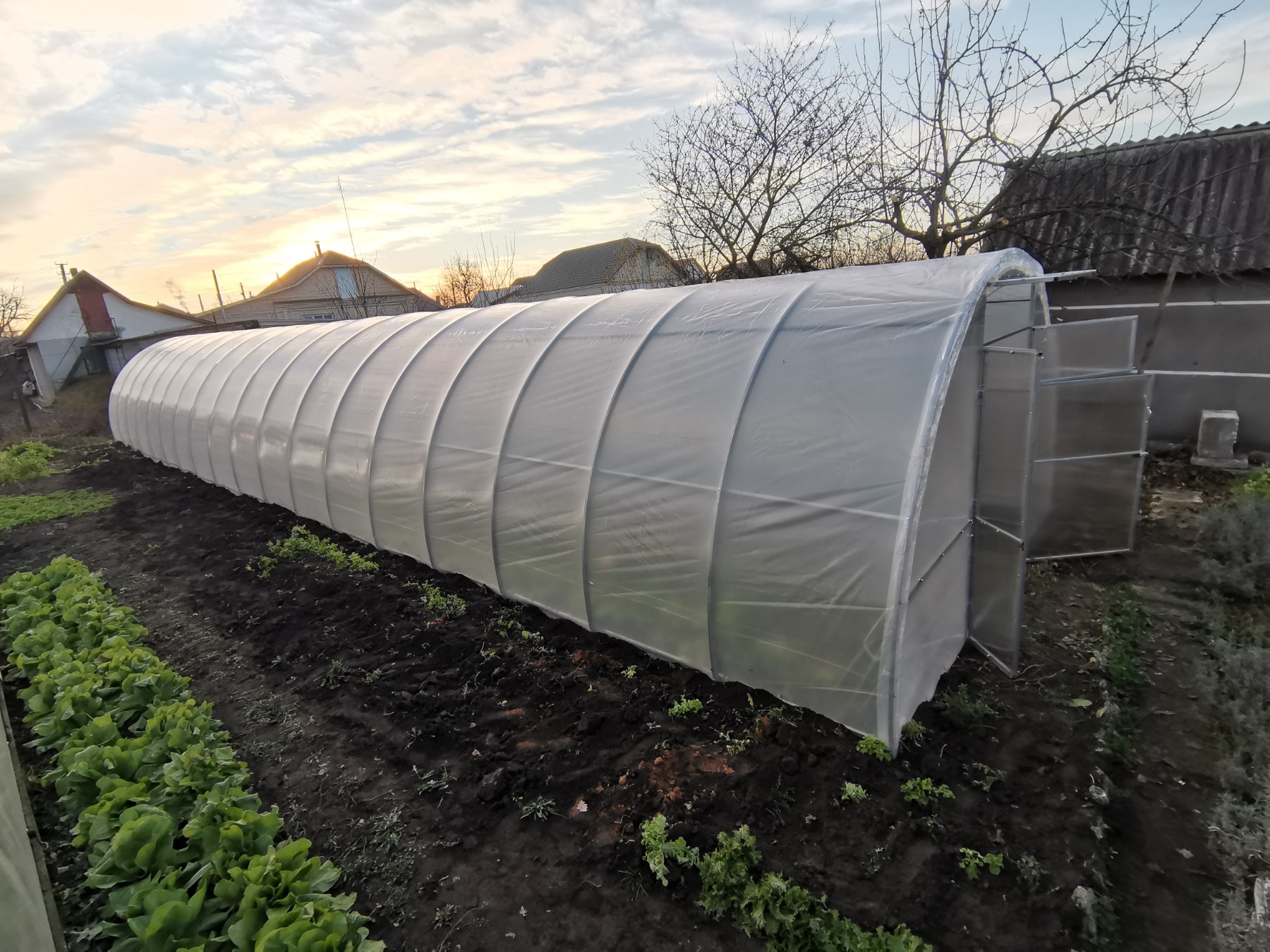
Greenhouse management comes with a number of challenges such as disease control, pest control, maintaining optimum humidity and preventing condensation. It is important to develop effective strategies to address these issues.
Disease and pest control:
In greenhouse conditions, plants can be more vulnerable to diseases and pests due to denser planting and a more stable microclimate. Prevention and rapid response to problems are key.
Example: Regular inspection of plants and monitoring of their condition will help to identify the first signs of diseases or the presence of pests. This will allow timely measures to prevent their spread.
Example: Using biological control methods, such as introducing beneficial insects to control pests, can be a more environmentally friendly and effective solution.
Humidity and condensation control:
Greenhouse conditions can promote high humidity and condensation, which can be detrimental to plant growth and promote disease development.
Example: Installing a good ventilation and air conditioning system helps maintain optimal humidity levels and prevent condensation.
Example: Using humidifiers or dehumidifiers can help regulate humidity in the greenhouse, especially during periods of unpredictable weather conditions.
Solving these problems requires constant observation, flexibility and a deep understanding of your plants’ needs. Your own experience and sharing experiences with other growers can help you develop the most effective strategies to overcome difficulties and ensure successful growth and yields in your greenhouse.
Effective resource management
Greenhouse farming requires skillful management of resources such as energy, materials and time. Efficient use of resources not only helps reduce costs but also increases business sustainability.
Energy saving and sustainability:
One of the significant cost components of greenhouse farming is energy costs. Managing energy consumption and switching to sustainable energy sources can save resources and reduce the impact on the environment.
Example: Installing solar panels to generate electricity can reduce grid dependency and cut energy costs.
Example: Using smart control systems that automatically adjust lighting, ventilation and heating can optimize energy consumption based on plant needs and weather conditions.
Material recycling:
Minimizing waste and recycling materials contributes to the sustainability of greenhouse operations and reduces the negative impact on the environment.
Example: Organic plant waste can be processed into compost, which can be used as a natural fertilizer for the soil.
Example: Using packaging that is easily recycled or reused helps reduce waste and create a more sustainable supply chain.
Example: Water recirculation in hydroponic systems reduces water consumption several times compared to traditional irrigation.
Effective resource management in greenhouse farming helps reduce operating costs, increase business resilience to change and contribute to environmental protection. With innovative approaches and the use of advanced technologies, it is possible to achieve an optimal balance between productivity and sustainability.
The Future of Greenhouse Agriculture
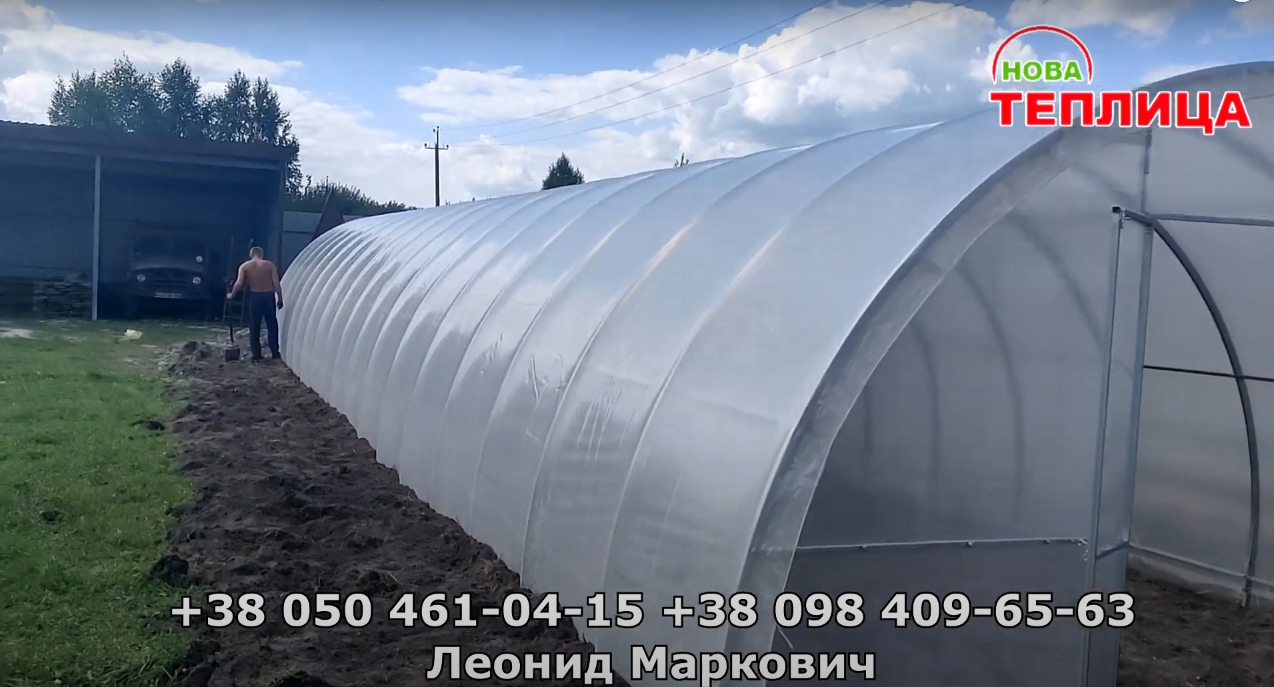
Greenhouse agriculture continues to evolve and change to meet modern needs and challenges. The future of greenhouse agriculture promises exciting trends, innovations and a major role in food security.
Trends and Innovations:
Modern technologies and new approaches to agriculture play an important role in the development of greenhouse agriculture.
| Trend/Innovation | Description |
|---|---|
| Smart control systems | Implementation of Internet of Things (IoT) technologies to monitor and control greenhouse conditions using mobile devices. |
| Vertical Growing | Efficient use of vertical space for growing crops, saving space. |
| Hydroponics and Aquaponics | Soilless, aquatic plant growing systems with added nutrients improve efficiency. |
| Genetic modification | Creating plants with improved characteristics, resistance to diseases and extreme conditions. |
| Sustainable energy sources | Using solar panels, wind turbines and other alternative energy sources to reduce dependence on traditional ones. |
| Precision farming | The use of drones and satellites to collect data on the condition of soil and plants, allowing for more precise management of agricultural crops. |
| Process automation | Use of robots and automatic systems for harvesting, pruning, watering and other operations. |
The role of greenhouses in food security:
Greenhouse agriculture plays an important role in providing the population with quality food, especially in the context of a changing climate.
Example: Greenhouses allow produce to be grown year-round, regardless of season, increasing the availability of fresh food to consumers.
Example: In regions with unfavourable climatic conditions, greenhouses can become a key tool for providing food to the population.
Example: Greenhouse growing allows for more precise control over production processes, which helps reduce the risk of diseases and pests and improves yield predictability.
The future of greenhouse agriculture promises to continue to integrate new technologies and innovations to increase productivity, improve product quality and ensure food security. Greenhouses are becoming an integral part of the sustainable and efficient agriculture of the future.
Why do you need a greenhouse: Let's sum it up
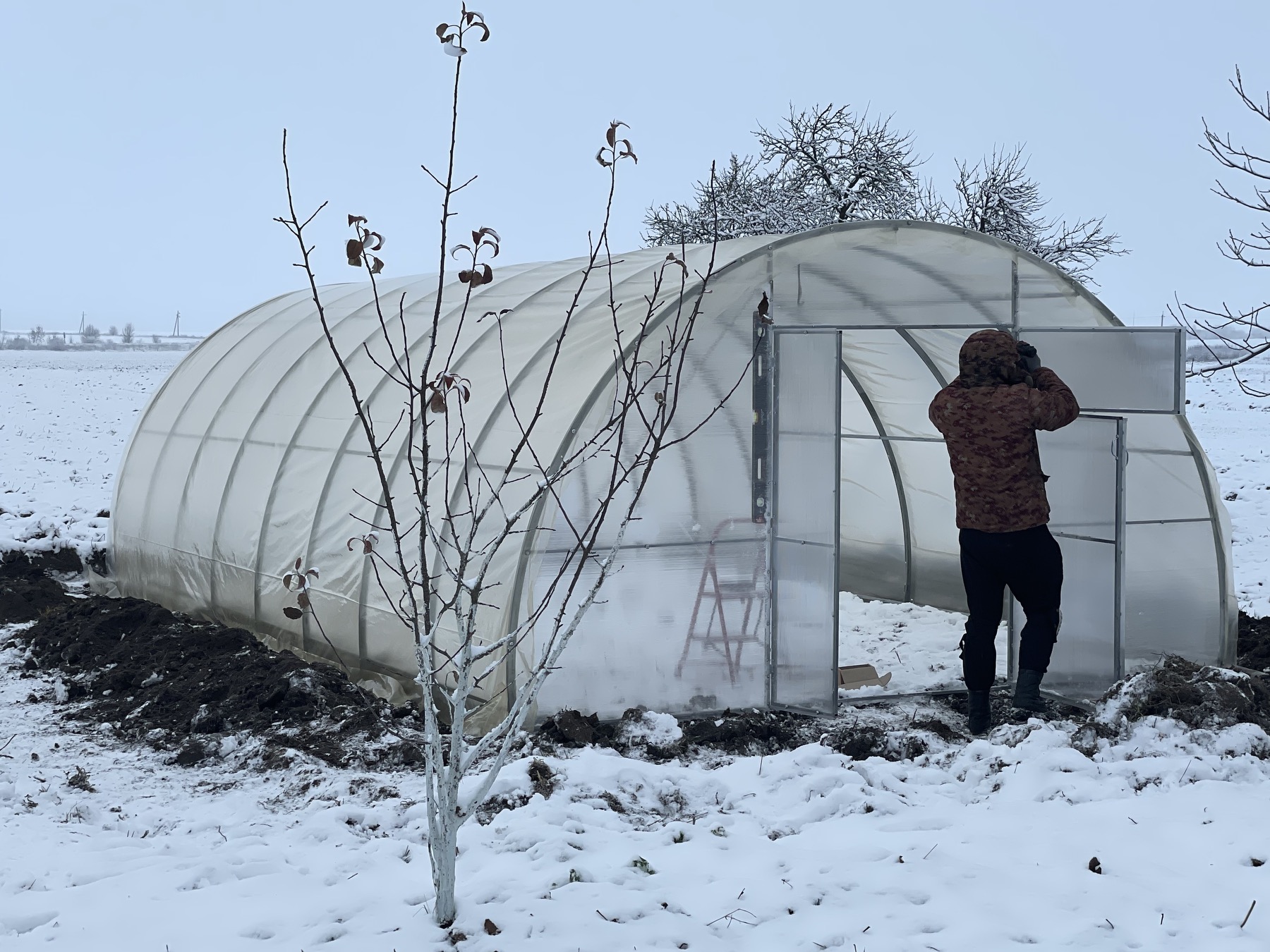
In modern agriculture, greenhouses play a key role in ensuring high productivity, sustainability and food security. It is important to understand that success in greenhouse farming requires continuous learning, adaptation to changing conditions and innovative thinking.
The importance of continuous learning and adaptation in greenhouse agriculture cannot be underestimated. Advances in technology, new scientific discoveries, and changes in climate create constant challenges and opportunities. The ability to adapt to new requirements and learn best practices helps farmers achieve optimal results.
It is important to emphasize that the use of greenhouses in agriculture is an integral part of modern agricultural practice. Greenhouse cultivation allows for control of climatic conditions, increased yields, improved product quality, and reduced risks. Thus, greenhouses are becoming a key element in providing the population with high-quality and affordable food.
If you are considering the introduction of greenhouse farming, do not forget about the importance of choosing reliable and experienced partners. In our company “NovaTeplitsa” you can purchase ready-made greenhouses or order individual solutions that meet your needs and goals. We are ready to support you on this exciting and promising path to successful greenhouse farming.





